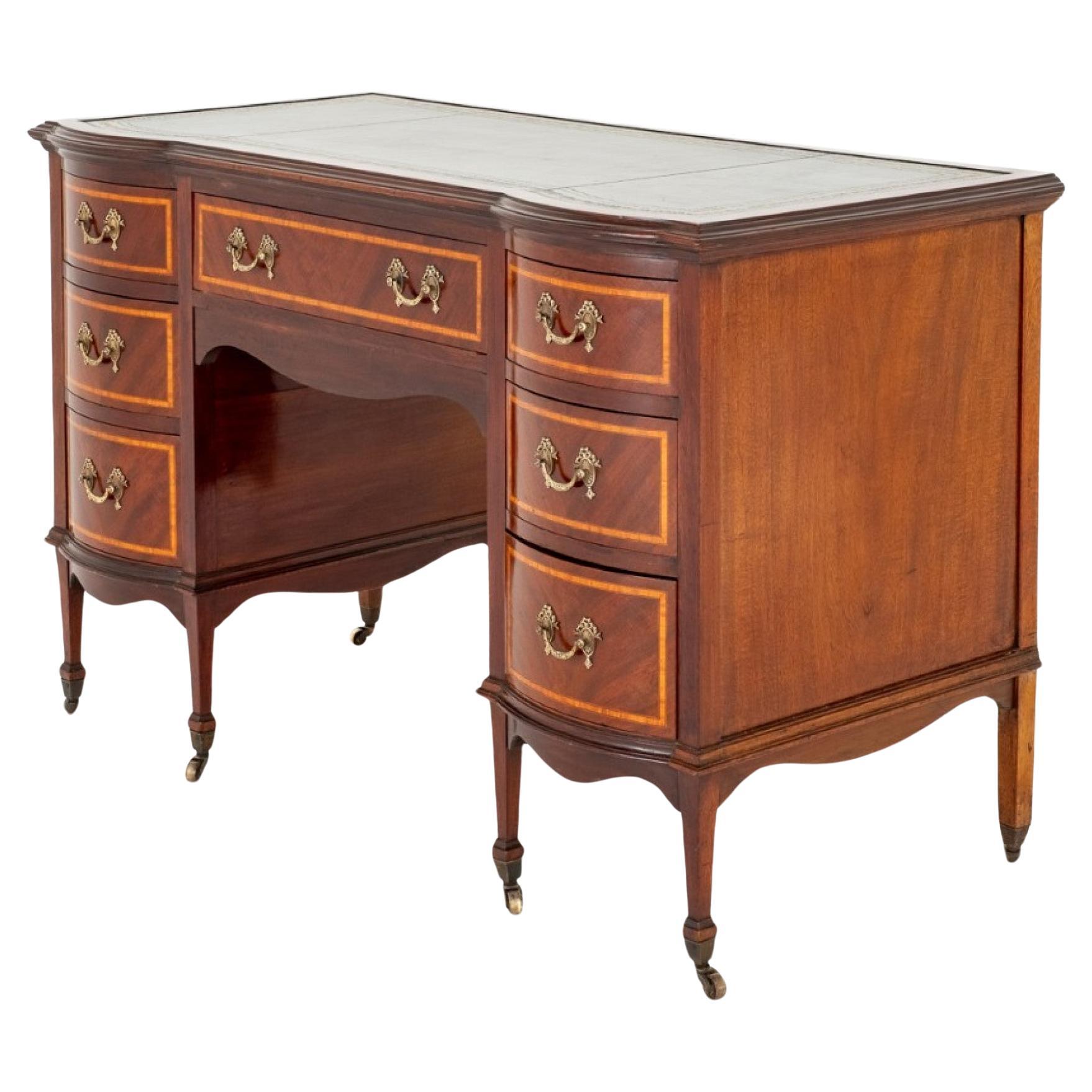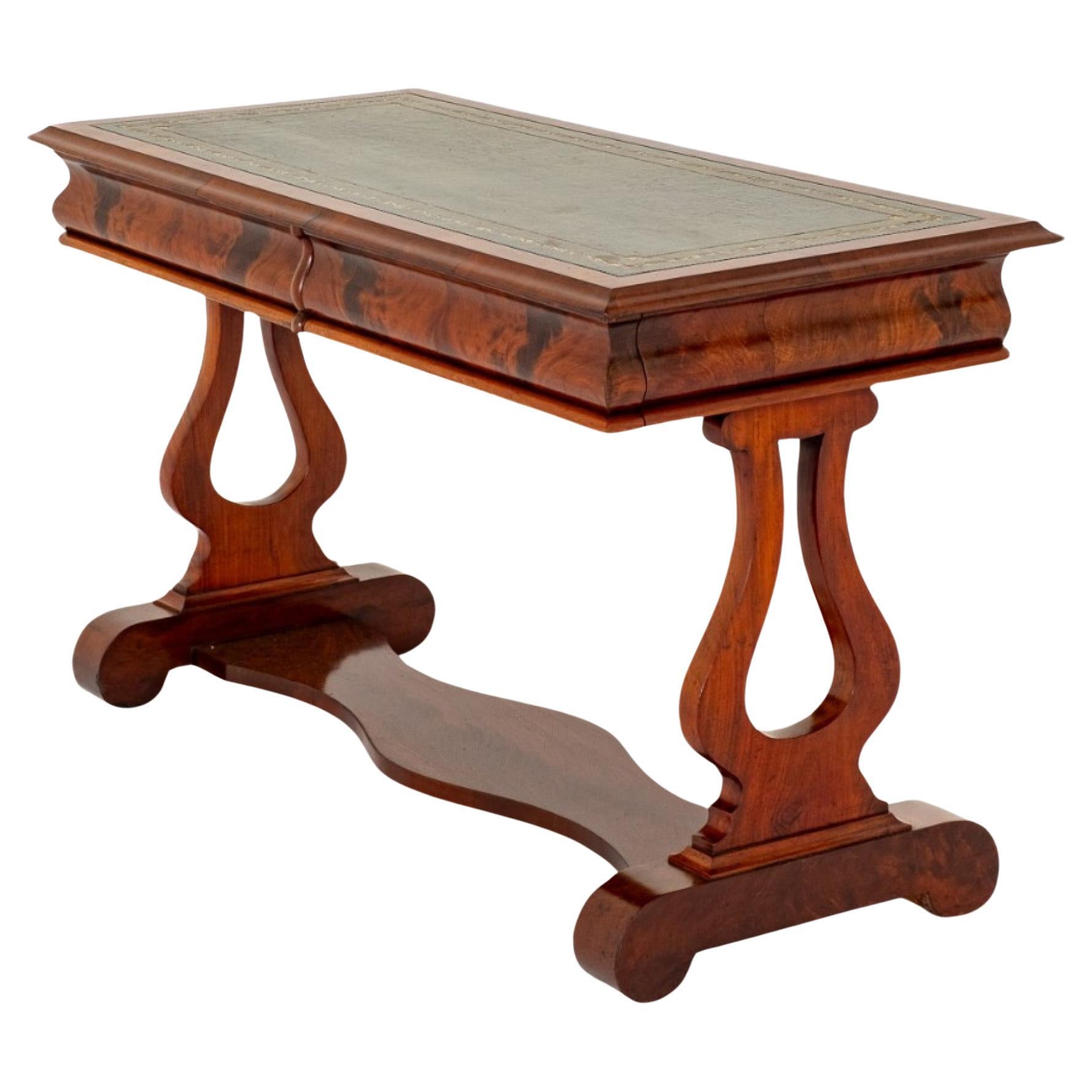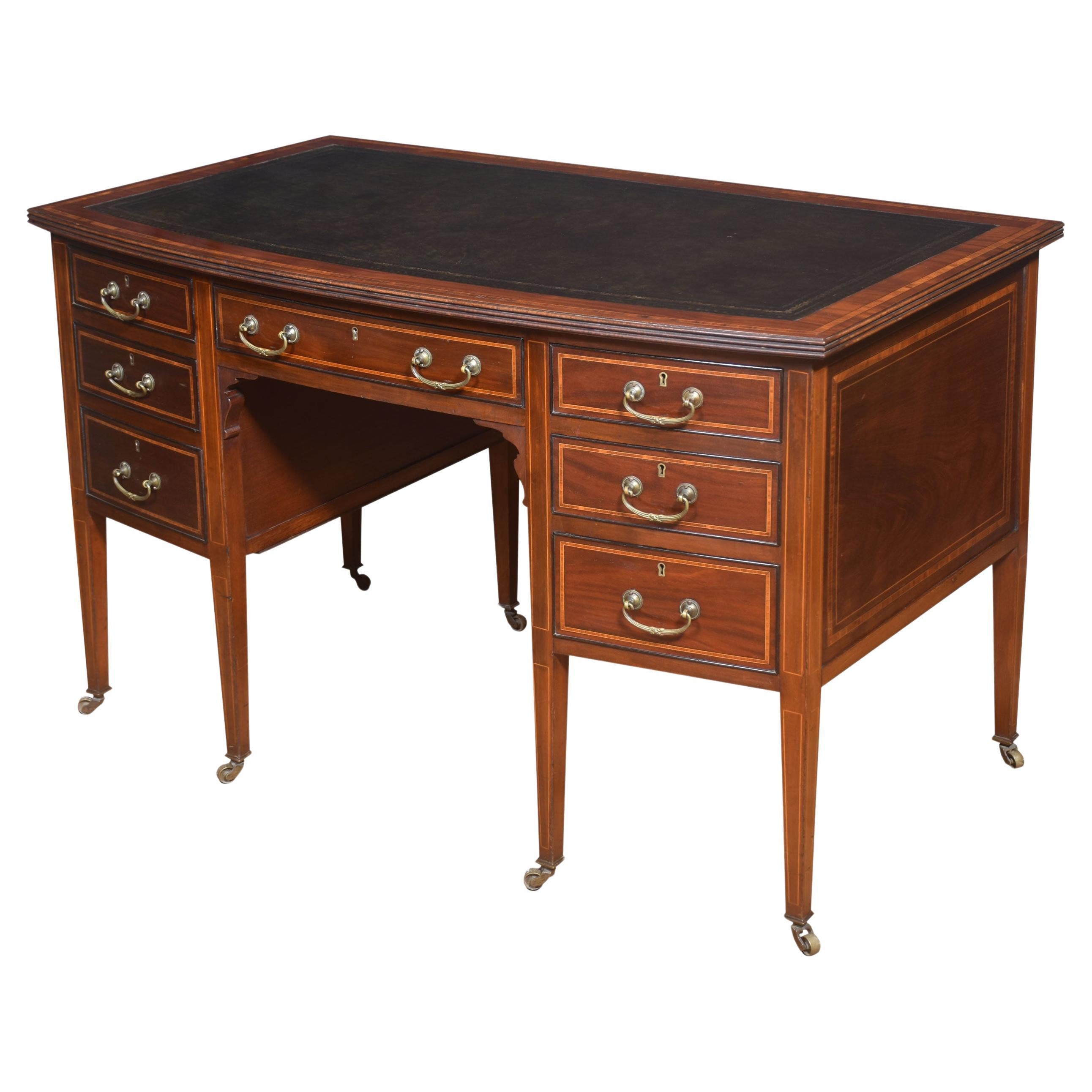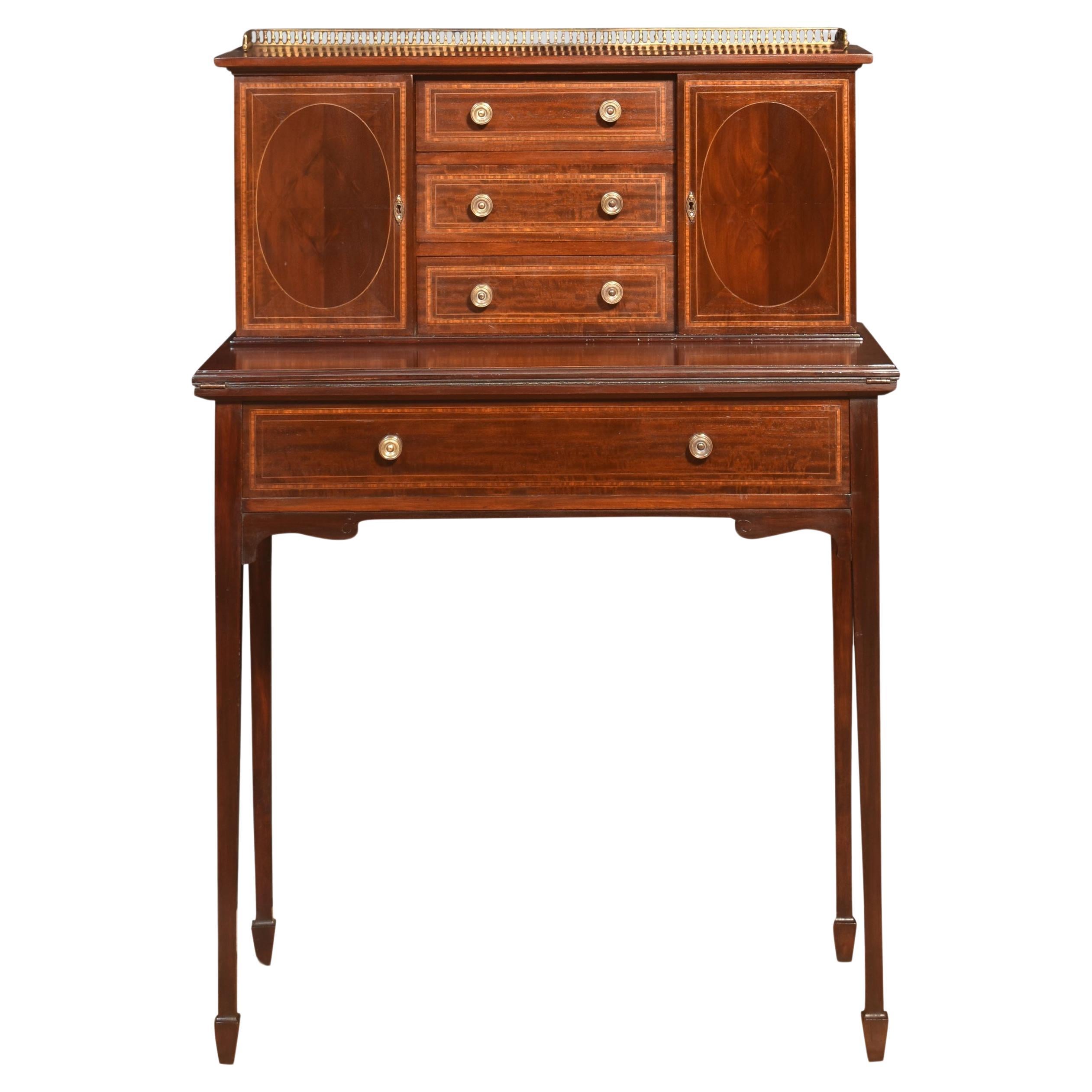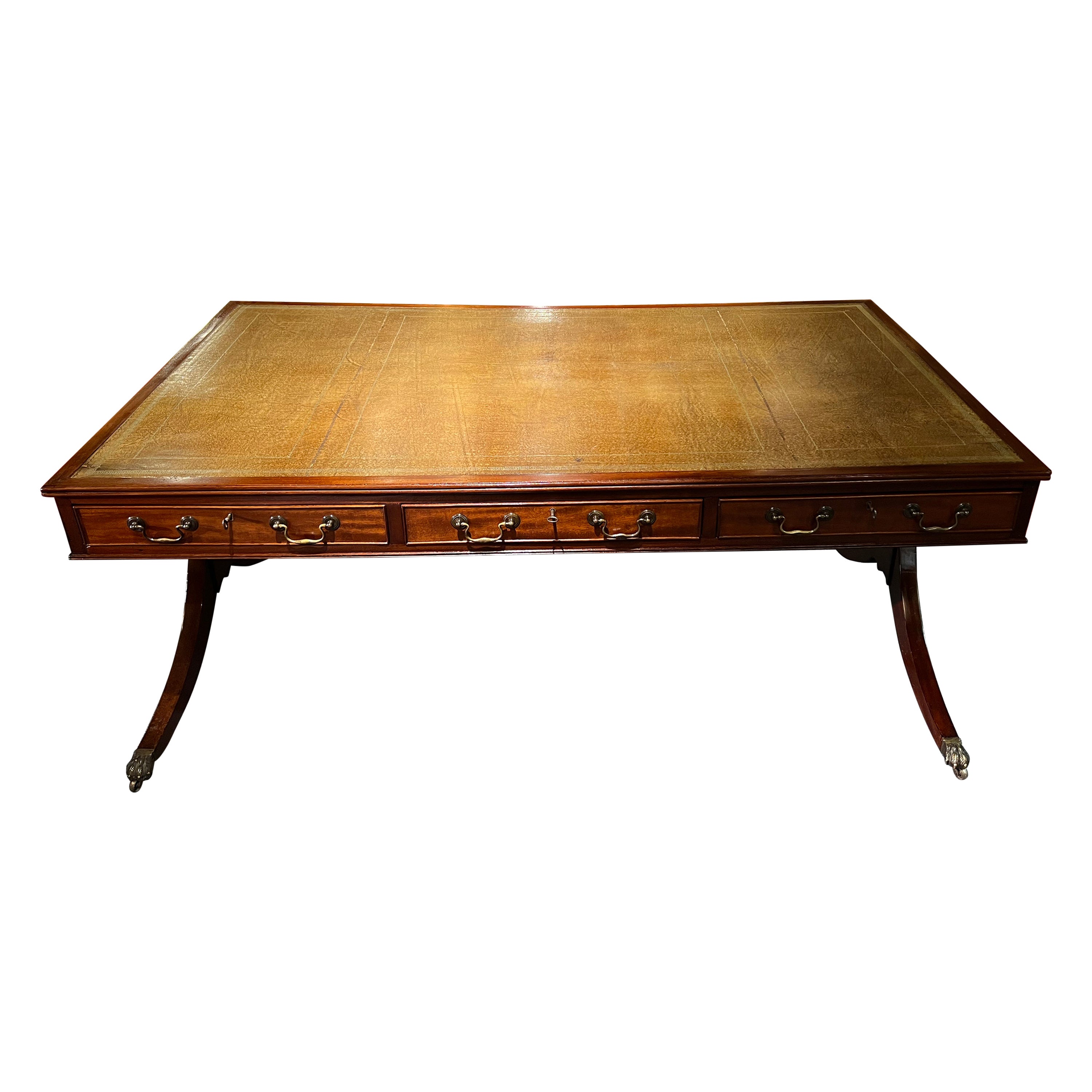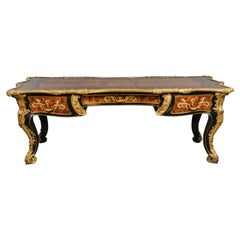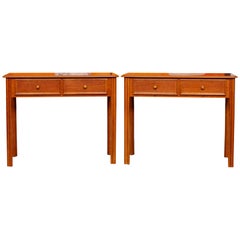
Pair of Writing Desk Tables 2 Fiddleback Mahogany Marquetry
View Similar Items
1 of 11
Pair of Writing Desk Tables 2 Fiddleback Mahogany Marquetry
About the Item
- Dimensions:Height: 28.35 in (72 cm)Width: 36.23 in (92 cm)Depth: 15.75 in (40 cm)
- Sold As:Set of 2
- Materials and Techniques:
- Place of Origin:
- Period:
- Date of Manufacture:1980
- Condition:
- Seller Location:Newcastle upon Tyne, GB
- Reference Number:1stDibs: LU5485222201942
You May Also Like
- Régence Style Marquetry Writing DeskLocated in Brighton, West SussexA magnificent and very rare Régence style marquetry inlaid grand bureau plat or writing desk. Inscribed to the carcass 'Moreaux 72'. Dating from the second half of the nineteenth century this magnificent and very rare bureau plat has finely cast rocaille gilt-bronze mounts and is decorated overall with truly breath-taking seventeenth century marquetry, depicting fantastical townscapes, knights, soldiers, hunting and architectural-scenes. Of serpentine rectangular form the top is veneered with superb marquetry panels within a foliate scrolled border and a rocaille shell-cast gilt-bronze surround, both sides featuring a recessed central drawer flanked on each side by a drawer applied with male and female terms, scrolled handles, and reserves with conforming drawers; the bombé sides are centred by foliate scrolls, and the whole raised on cabriole legs headed by cartouches with foliate entwined chutes terminating in scrolled sabots. Of impressive scale this fine bureau plat, in the manner of a partners desk, features working drawers to each side. This model of bureau plat was made by a small number of celebrated Parisian cabinet makers in the second half of the 19th century including Beurdeley, Cremer and Befort Jeune. It is incredibly rare to see this model of bureau plat inlaid in marquetry. The exceptional quality and style indicate the use of older reused marquetry, almost certainly dating from the late 17th century and originating from the Augsburg region of Germany. Similar models but lacking the exceptional marquetry inlay can be found in the collection of the Duke of Buccleuch at Bowhill, and the Earl of Normanton at Somerlely. Christopher Payne notes that the latter was part of a pair sold by the London dealer Toms & Luscombe in 1871. He illustrates the present bureau plat in his book ‘European Furniture of the 19th Century’ (p. 88-89), along with two related desks minus the marquetry inlay (p. 92 -93). The exceptional and highly complex marquetry inlay and intarsia work, that sets this important bureau plat apart from other extant examples, would originally have formed the decorative panels of a late 17th century table cabinet, almost certainly ascribable to the Augsburg region of Germany. Augsburg emerged from the middle of the 16th century as the German centre of luxury cabinet making for the international market. In particular, the development of marquetry contributed to this prominent position, favoured by the ready availability of indigenous woods and the reputation that Augsburg had the best craftsmen able to cut thin layers of veneers in the most intricate motifs (C.S. Wood, ‘The Perspective Treatise in Ruins: Lorenz Stöer, Geometria et perspectiva, 1567’, Studies in the History of Art, no. 59, p. 246). Table cabinets, conceived as a form of Wunderkammer or cabinets of curiosities, were intended as repositories for all manner of wondrous and exotic objects and by the 1550s the grandest cabinets in Europe were being made in Augsburg. Decorated almost entirely with sumptuous marquetry, often depicting perspective views of ruins and fantastical townscapes, they become by the 1590s highly regarded as important diplomatic gifts. Fine Augsburg marquetry panels remained popular throughout the ages and were frequently re-used to create or embellish new items of furniture, such as this magnificent bureau plat. Their inclusion was not only for their highly decorative appeal, but to contemporary eyes, a means by which to imbue a new creation with a sense of true historical authenticity. The importance of such panels is often reflected in the high cost involved in repurposing them. A fine example of this is the celebrated 17th century cabinet on stand...Category
Antique Mid-19th Century French Louis XV Desks and Writing Tables
MaterialsOrmolu
- Mahogany Writing DeskLocated in Cheshire, GBMahogany and fruitwood inlaid ladies writing desk. The superstructure with central shelf flanked by sloped lidded piers, each with a single drawer. The shaped molded edge top with in...Category
Early 20th Century British Desks and Writing Tables
MaterialsWood
$2,491 - Antique Mahogany Writing Desk Dressing TableLocated in Wisbech, CambridgeshireAntique fine quality C1910 mahogany writing desk or dressing table. Stamped W.FOWKES. Solid heavy, no loose joints and no woodworm. Full of age, character and charm. The drawers s...Category
Vintage 1910s Desks and Writing Tables
MaterialsWood
$1,221 Sale Price20% Off - Regency Desk Writing Table Mahogany 1880Located in Potters Bar, GBSheraton Revival Mahogany Writing Desk. The term "Sheraton Revival" typically refers to a style of furniture that draws inspiration from the designs of the late 18th-century English ...Category
Antique 1880s Regency Desks and Writing Tables
MaterialsMahogany
- Victorian Desk Writing Table Mahogany 1860Located in Potters Bar, GBVictorian Mahogany Writing Table. Circa 1860 This Writing Table Features Lyre End Supports, a Shaped Undershelf and Shaped Feet. The Top of the Writing Table Having 2 Oak Lined Cushi...Category
Antique 1860s Victorian Desks and Writing Tables
MaterialsMahogany
- Antique Walnut and Marquetry Writing DeskLocated in London, GBThis elegant writing desk was created in France in the late 18th century, during the reign of King Louis XVI (1774-1792). The desk is designed in a refined neoclassical style which w...Category
Antique Late 19th Century French Louis XVI Desks
MaterialsBrass
Recently Viewed
View AllMore Ways To Browse
Leather Top Side Table Casters
Hans Von Klier For Skipper
Wegner Ry 32
Floral Italian Writing Desk
Ry 32
Danish Black Lacquer Writing Desk
Kjaerholm Pk52
Victorian Mahogany Partners Desk
Mid Century Desks By Heywood Wakefield
Desk Crossbar
Saw Horse Desk
Walnut L Shape Desk
Amorph Astra
Angular Burl
Antique Wood Drafting Desk
Coastal Writing Desk
Curved Computer Desk
Drop Leaf Vodder



